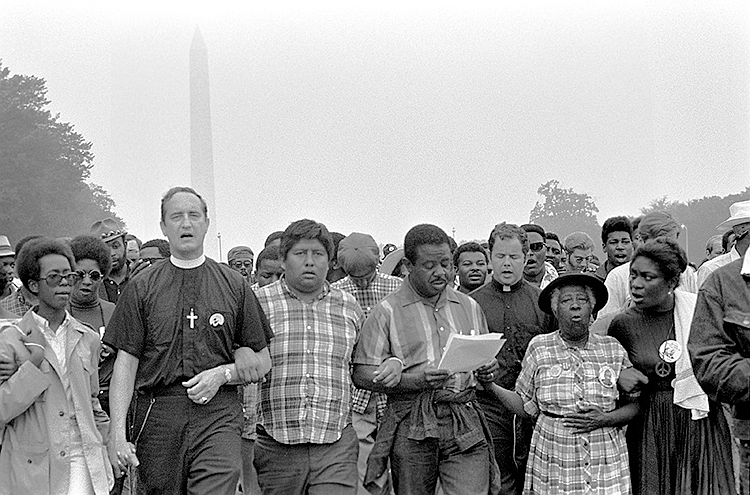Solidarity Now! 1968 Poor People’s Campaign
February 9, 2024 at 7:44 a.m.
Ministers’ March, 1968, photographer Laura Jones. Smithsonian National Museum of African American History and Culture, Gift of Laura Jones, © Laura Jones. Solidarity Now! exhibition currently at the Washington State History Museum.
This traveling exhibition from the Smithsonian illuminates the often-overlooked history of the multicultural movement to confront poverty that redefined social justice and activism in America.
What was the Poor People’s Campaign?
In 1968, thousands of people built a protest community and for nearly six weeks, inhabited “a city of hope” on 15 acres of the National Mall in Washington, D.C., to call the nation’s attention to the crippling effects of poverty for millions of Americans. The protest site was called Resurrection City.
This multiethnic movement included African Americans, Mexican Americans, Native Americans, Puerto Ricans, Asians and poor whites from Appalachia and rural communities. Along with the protest community in Washington, D.C., there were demonstrations nationwide. The campaign leaders presented demands to Congress, including demands for jobs, living wages and access to land, capital and health care.
At the time, while the United States had emerged as a global model of wealth and democracy, an estimated 25 million Americans lived in poverty. Poverty affected people of every race, age and religion. In response, the Southern Christian Leadership Conference, led by Martin Luther King, Jr. and Ralph Abernathy, organized the Poor People’s Campaign as a national human rights crusade. It was the first large-scale, nationally organized demonstration to take place after King’s death.
The Exhibition
The exhibition presents photographs, oral histories of participants and organizers, and an array of protest signs, political buttons, and audio field recordings collected during the campaign, to tell the story of this influential movement. A 3D map of Resurrection City invites visitors to examine the planned spaces for housing, a cultural center, city hall, theater stage and essential services, including facilities for food and dining, sanitation, communications, education, medical and dental care, and childcare. The elements of the campaign that made it a success are also explored.
This exhibition is organized by the Smithsonian Institution Traveling Exhibition Service in collaboration with the National Museum of African American History and Culture and supported by the CVS Health Foundation.





